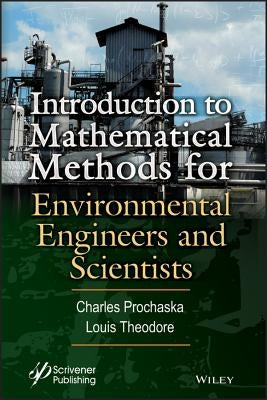John Wiley & Sons
Intro to Mathematical Methods
Intro to Mathematical Methods
Couldn't load pickup availability
The authors' aim is to offer the reader the fundamentals of numerous mathematical methods with accompanying practical environmental applications.
The material in this book addresses mathematical calculations common to both the environmental science and engineering professionals. It provides the reader with nearly 100 solved illustrative examples and the interrelationship between both theory and applications is emphasized in nearly all of the 35 chapters. One key feature of this book is that the solutions to the problems are presented in a stand-alone manner. Throughout the book, the illustrative examples are laid out in such a way as to develop the reader's technical understanding of the subject in question, with more difficult examples located at or near the end of each set.
In presenting the text material, the authors have stressed the pragmatic approach in the application of mathematical tools to assist the reader in grasping the role of mathematical skills in environmental problem-solving situations. The book is divided up into 5 parts:
- Introduction; Analytical Analysis; Numerical Analysis; Statistical Analysis; and Optimization.
- The analytical analysis includes graphical, trial-and-error, search, etc. methods.
- The numerical analysis includes integration, differentiation, differential equation, Monte Carlo, etc.
- The statistical analysis includes probability, probability distribution, decision trees, regression analysis, etc.
- Optimization includes both traditional approaches and linear programming.
Author: Prochaska, Theodore
Publisher: John Wiley & Sons
Published: 06/19/2018
Pages: 498
Binding Type: Hardcover
Weight: 1.84lbs
Size: 9.00h x 6.00w x 1.06d
ISBN: 9781119363491
About the Author
Charles Prochaska is a graduate student at Manhattan College pursuing a M.S. degree in chemical engineering. He is currently working in pre-clinical manufacturing process development at Regeneron Pharmaceuticals.Before exploring chemical engineering, Charles worked as a cosmetics chemist and procedure consultant for three years. Charles researched biomolecule-nanoparticle interactions for the Center for Functional Nanomaterials located in Brookhaven National Laboratory as well as novel DNA nanotag development at St. Joseph's College.
Louis Theodore, MChE and EngScD, is a retired professor of chemical engineering (50 years). He is the author of several publications, including Fluid Flow for the Practicing Chemical Engineer, Thermodynamics for the Practicing Engineer, Mass Transfer Operations for the Practicing Engineer, and Air Pollution Control Equipment Calculations. Dr. Theodore is also a contributor to Perry's Chemical Engineers' Handbook.
Share


